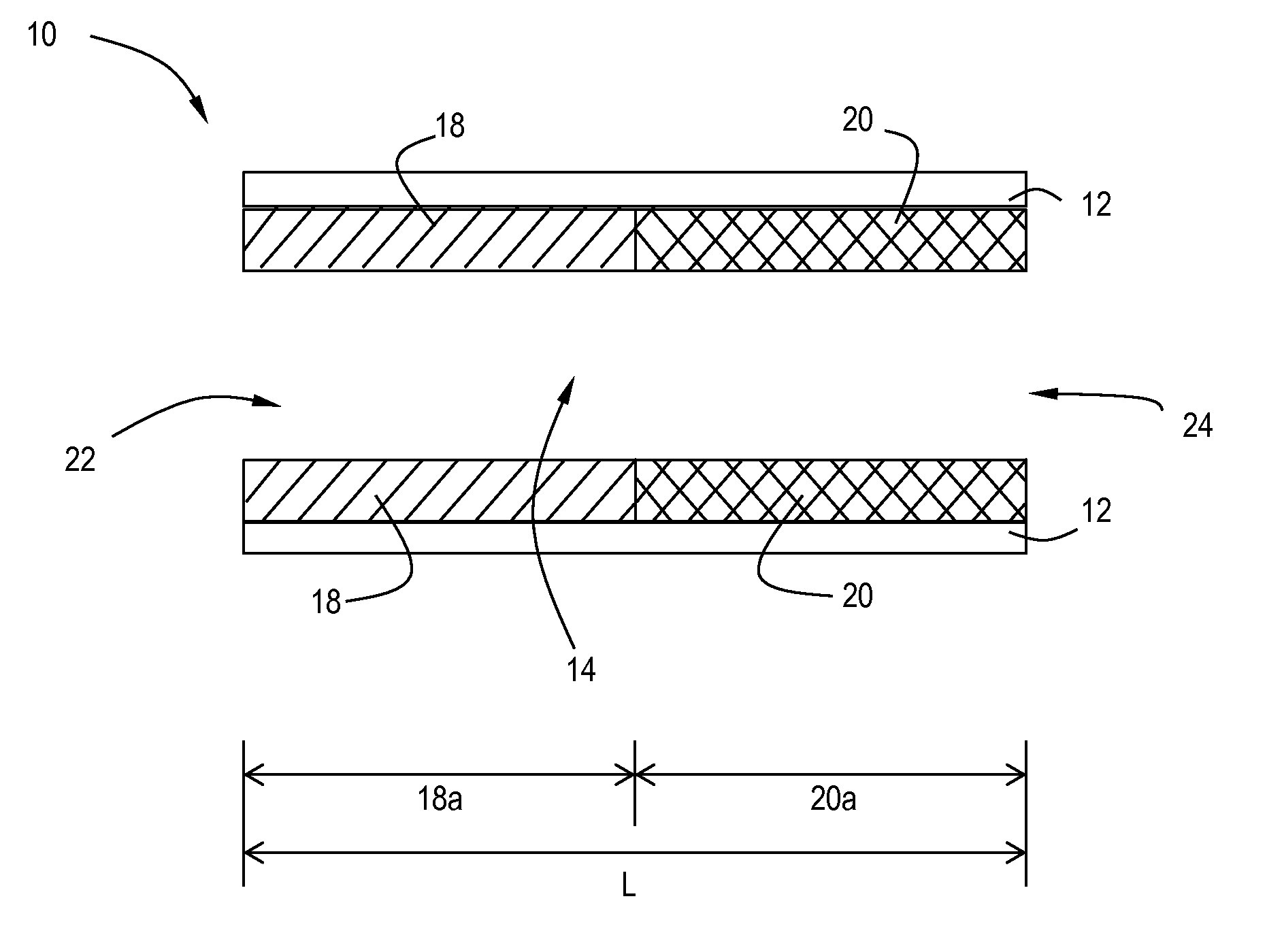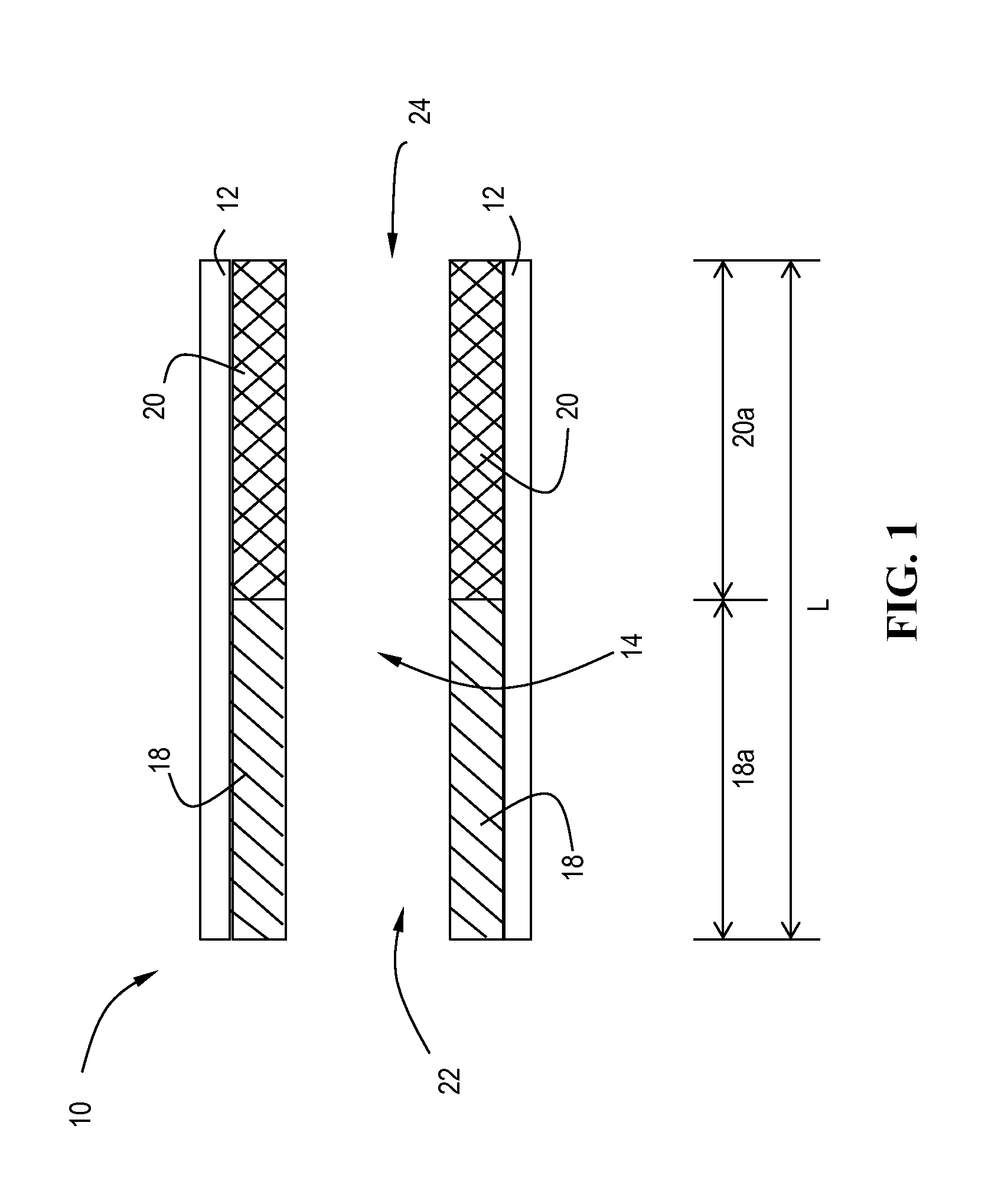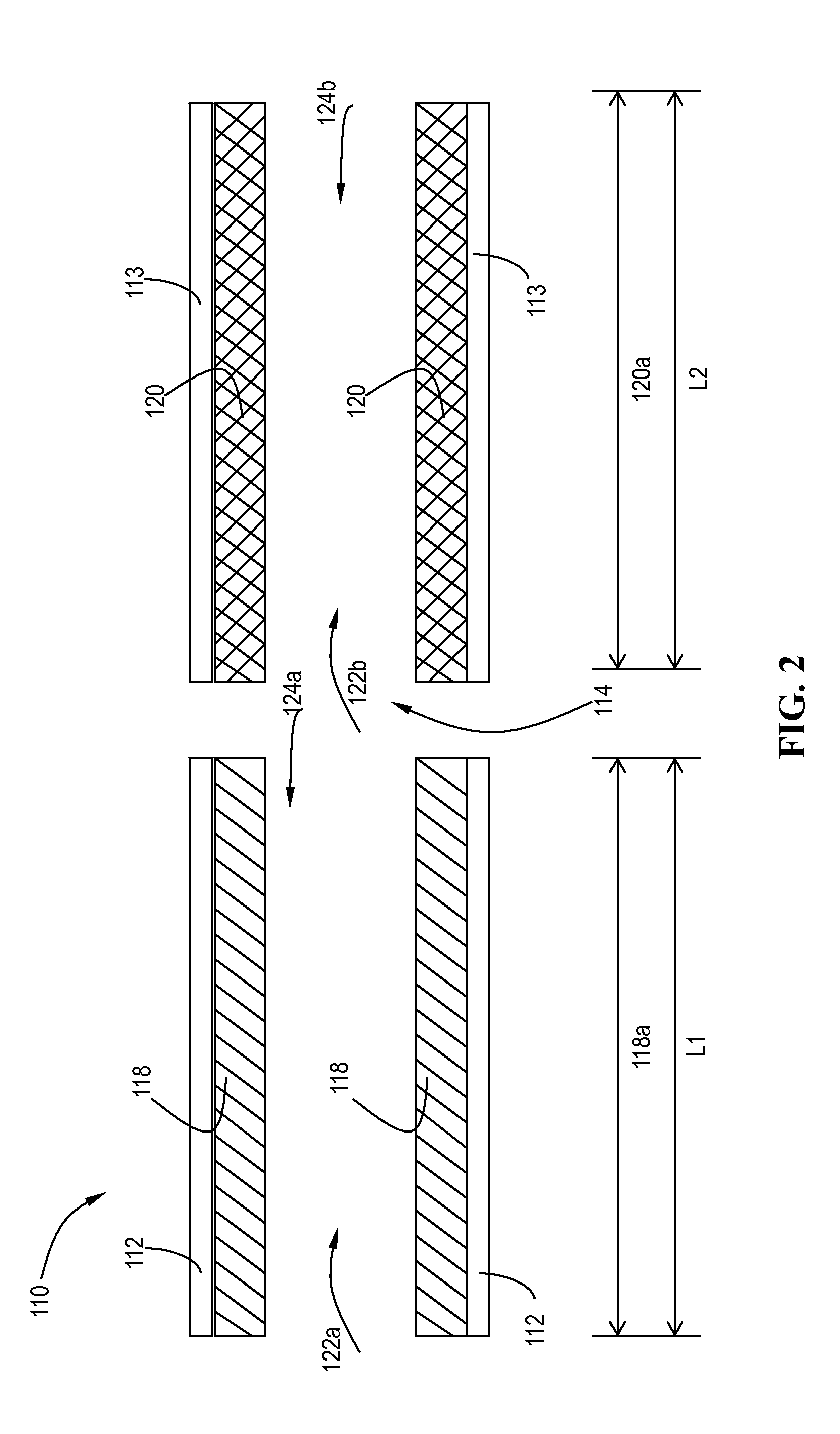Selective catalytic reduction catalyst system
a catalytic reduction and catalyst technology, applied in the direction of metal/metal-oxide/metal-hydroxide catalysts, machines/engines, arsenic compounds, etc., can solve the problem of difficult to achieve effective abatement of no/sub>x/sub>from lean burn engines, the activity of many metal-promoted zeolites, such as cu and fe versions of zsm-5 and beta, and the effect of increasing the steady sta
- Summary
- Abstract
- Description
- Claims
- Application Information
AI Technical Summary
Benefits of technology
Problems solved by technology
Method used
Image
Examples
example 1
Preparation of Catalyst Materials
[0132]Vanadia-Titania Catalyst
[0133]A standard vanadia / titania / tungsten (V2O5 (2.5%) / WO3 (10%) / TiO2) catalyst was prepared and a slurry was made at about 30-40% solids by milling to provide a washcoat slurry.
[0134]Cu-Zeolite
[0135]A CuCHA (SSZ-13) powder catalyst was prepared by mixing 100 g of Na-form CHA, having a silica / alumina mole ratio of 30, with 400 mL of a copper (II) acetate solution of about 1.0 M. The pH was adjusted to about 3.5 with nitric acid. An ion-exchange reaction between the Na-form CHA and the copper ions was carried out by agitating the slurry at about 80° C. for about 1 hour. The resulting mixture was then filtered to provide a filter cake, and the filter cake was washed with deionized water in three portions until the filtrate was clear and colorless, and the washed sample was dried.
[0136]The obtained CuCHA catalyst comprised CuO at a range of about 2.5 to 3.5% by weight, as determined by ICP analysis. A CuCHA slurry was prepa...
example 2
Catalyst System Laterally Zoned
[0137]The slurries described above were separately coated onto 12″D×6″L cellular ceramic substrate having a cell density of 400 cpsi (cells per square inch) and a wall thickness of 4 mil. The coated substrates were dried at 110° C. for 3 hours and calcined at about 400° C. for 1 hour. The coating process was repeated once to obtain a target washcoat loading of in the range of 3 g / in3 on the vanadia-titania coated core, and 2.1 g / in3 on the CuCHA coated core. The samples were aged for 200 hours at 550° C. on a heavy duty diesel engine test cell.
example 4
Engine Testing of Laterally Zoned Systems
[0139]The catalyst systems in Example 3 and 4 were tested out on a 9 L heavy duty engine together with a motoring electric dynamometer. The test bench is capable of running both steady-state and transient test cycles. In the current work, both a Heavy duty transient test cycle (HDTP) and a non-road transient test cycle (NRTC) were run. Catalysts samples were full size 12″ diameters parts (400 / 4), which were 200 h-550° C. engine aged prior to evaluations. To demonstrate the advantage of the lateral zoned system of a 12″×6″ V-SCR brick upstream of a 12″×6″ Cu-CHA brick, a reference sequential 12″×6″ Cu+12″×6″ Cu SCR system was also evaluated. In such a comparative study, only the first SCR catalyst brick were switched between V-SCR and Cu-SCR, other systems such as the second SCR brick, urea injection system, sample probing locations were kept the same.
[0140]During evaluation tests, two MKS FTIR samplers were positioned at SCR upstream and down...
PUM
| Property | Measurement | Unit |
|---|---|---|
| temperatures | aaaaa | aaaaa |
| temperatures | aaaaa | aaaaa |
| temperature | aaaaa | aaaaa |
Abstract
Description
Claims
Application Information
 Login to View More
Login to View More - Generate Ideas
- Intellectual Property
- Life Sciences
- Materials
- Tech Scout
- Unparalleled Data Quality
- Higher Quality Content
- 60% Fewer Hallucinations
Browse by: Latest US Patents, China's latest patents, Technical Efficacy Thesaurus, Application Domain, Technology Topic, Popular Technical Reports.
© 2025 PatSnap. All rights reserved.Legal|Privacy policy|Modern Slavery Act Transparency Statement|Sitemap|About US| Contact US: help@patsnap.com



